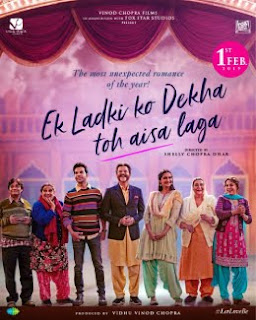|
Release
date:
|
Kerala: December 20, 2019
Delhi: December 27, 2019
|
|
Director:
|
Rajesh
Mohanan
|
|
Cast:
Language:
|
Jayasurya,
Swathi Reddy, Mallika Sukumaran, Vijay Babu, Sudev Nair, Manikuttan, Sreejith
Ravi, T.G. Ravi
Malayalam
|
A
discussion on Thrissur Pooram is not
possible without referring to other Malayalam films of this genre that were
released in 2019: the Tovino Thomas starrer Kalki, Mikhael with Nivin Pauly and Under World starring Asif Ali. Thrissur Pooram is more Under World than the other two in the
sense of how generic and boring it is. In terms of violence, its brutality is
closer to Kalki than the rest
although the bloodletting in this new film is not as unrelenting as it was in
that one. And unlike Kalki, Thrissur Pooram is not viscerally
misogynistic – it simply relegates women to the sidelines.
Director Rajesh Mohanan’s film places the spotlight on an
aspect of Thrissur far removed from the temple festival the city is known for.
In fact, at its core, sadly enough, lies a rather nice message that is completely
lost: that once you enter the world of crime, you may choose to leave that life
but that life is unlikely to leave you. Equally sadly, one of contemporary
Malayalam cinema’s finest, most versatile actors has lent his name to Thrissur Pooram. Is it a measure of the limited choices
available to him that just a year after his soul-searching performances in Njan Marykutty and Captain, Jayasurya has opted to under-act in this tedious,
sometimes nauseatingly bloody enterprise?
The story of Thrissur
Pooram is hard to recall because there is so little of it. Once you wade
past the deafening background score, the posing around, the slow motion shots
and the overall over-indulgence, what you get is a cycle of violence unleashed
by a single incident at a coffee shop.
Gangster Pullu Giri (Jayasurya) has given up crime and has confined himself to
mundane domesticity with his wife (Swathi Reddy) and daughter when circumstances not of his making destroy his peace. One spark sets off a full-blown inferno, and the
result is an all-out war between his until-now-virtually-defunct gang and another. Giri has
always had the unflinching support of a respected senior lawyer played by
Mallika Sukumaran. Hovering in the background is an old roadside tea stall
owner (Indrans) whose son was once mowed down by an unidentified luxury car.
Not
one of these men and women is built up as a flesh and blood creature with
thoughts and feelings. Ratheesh Vega’s screenplay feels like a patchwork quilt
of post-it notes bearing basic descriptors such as “Jayasuryachettan’s character, known as Giriyettan to everyone”, “Giriyettan’s
lawyer played by Mallika Ma’am”, “Giriyettan’s wife played by whoever we can
get” and so on. Giri’s entire relationship with the latter is recounted through
one song featuring the two of them with a couple of lines of conversation
thrown in – that most clichéd of devices used by commercial Indian filmmakers
who want to give their action heroes a woman to fall in love with and possibly
protect, but don’t want to waste time on her characterisation.
The
writing of the rival gang is even more skeletal. Of Giri’s enemies, only one is
identifiable and distinguishable from the rest: a young criminal played by
Sudev Nair whose greatest fear is not being killed but being deemed incompetent
by his elder brother, the gang’s kingpin. Now there is an interesting chap, there
is someone with whom the storyline could have gone somewhere, but nothing happens.
Him apart, the rest are just blurry blobs who I am already struggling to
recall.
The
camerawork in Thrissur Pooram is
pathetic. Poorly constructed frames are set up to magnify personalities but
fail miserably not just because heroes captured in repeated low-angle shots and
groups of people turning corners in slow motion are done to death, but because
DoP R.D. Rajasekar cannot even get his angles right. In one scene, as a man
gazes down from an under-construction high-rise building at a body on the
ground way below, far from seeming gigantic or intimidating, he looks comical
and oddly stunted.
Just
as I was consoling myself with the thought that at least the depiction of
violence here is not as voyeuristic and horrifying as in Kalki, there comes a murder in Thrissur
Pooram that will remain forever embedded in my mind. In a scene towards the
end, a man drives a knife into another’s abdomen and the camera actually zooms
in on the wound as blood gradually spreads across the victim’s shirt and the
killer keeps rotating the weapon to destroy the dying man’s insides.
The
cast does full justice to this vacuous script by delivering vacuous
performances. Jayasurya gives himself a choice between precisely two
expressions throughout: deadpan or mild grimace. Ms Sukumaran looks suitably
grim. Ms Reddy looks nothing. Even
Indrans, who has in the past extracted a moment or
two of quality from the worst of scripts, over-acts in a couple of scenes.
2019
has largely been a great year for the Malayalam film industry a.k.a. Mollywood.
Every few months though, just as we are celebrating the lyricism of a Kumbalangi Nights, the poignance of an Uyare or the audaciousness of a Jallikattu, along comes a Thrissur Pooram to remind us of how bad
bad can be. The tragedy is that the year has seen even
worse.
Rating (out
of 5 stars): 0.75
|
CBFC Rating (India):
|
UA
|
|
Running time:
|
156 minutes
|
This review has also been published on Firstpost:







